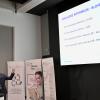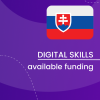Digital Pupil - Slovakia
Slovakia is currently facing the challenge of how to effectively prepare students for professions that do not yet exist today. Experts’ forecasts are clear – up to 65% of today’s primary school pupils will one day fill the jobs created by Industry 4.0. A key role in effectively preparing students for the digital future is played by the set-up of the education system as a whole and the active involvement of digital devices in the actual teaching process at all levels, both at school and at home. The activities of the Recovery and Resilience Plan of the Slovak Republic and the Digital Skills Strategy of the Slovak Republic are helping to progressively meet this objective, but to be truly effective and deliver the desired results, the underlying problem of uneven access to digital devices needs to be addressed.
About this initiative
The aim of the national project Digital Pupil Assignment (Digital Pupil) is precisely to increase the availability of digital devices towards target groups of pupils from socially disadvantaged backgrounds and to promote a more independent approach to education, as well as to master digital technology in preparation and in teaching, while creating conditions for the implementation of distance learning for all pupils.
Why is this a good practice?
The Slovak initiative has brought concrete results. Thanks to Digital Pupil, more than 130.000 pupils have a new digital device at home for learning and developing digital skills. This was also the original goal of the project. The voucher scheme developed has proven to be fast, efficient, and transparent - it has also brought other needs to the surface, such as the need for a more systemic way of conducting pupil assessment. The project is highly adaptable and scalable: it has the potential of being replicated in other contexts or different target groups. It has also succeeded in ensuring equal access to digital resources for all, scoring high in accessibility. Finally, the initiative succeeded in fostering a culture that promotes digital learning and helped to reduce barriers for disadvantaged students.





